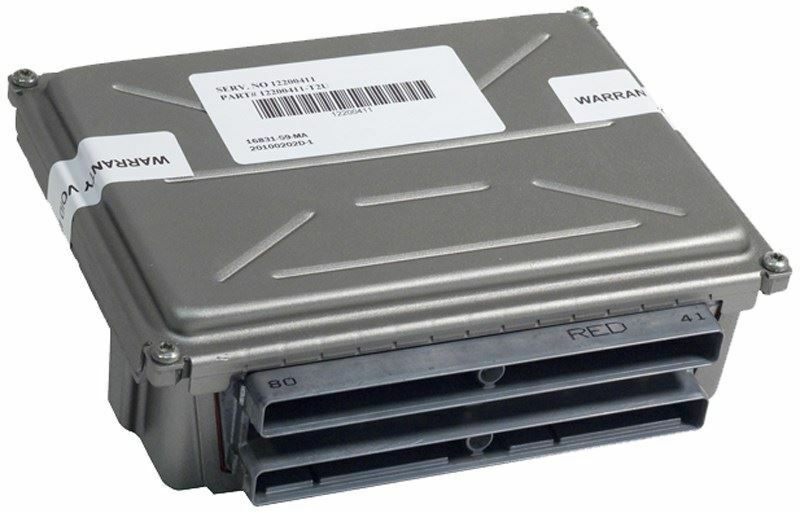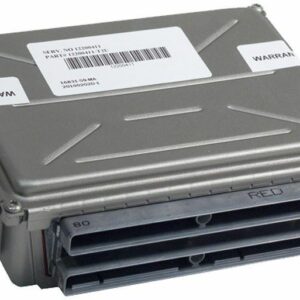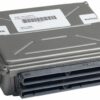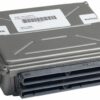Restore Peak Performance to Your GM Vehicle
Is your car suffering from a persistent Check Engine Light, erratic shifting, or a frustrating no-start condition? As a technician with over two decades of experience, I’ve seen firsthand how a failing Powertrain Control Module (PCM) can create a host of mysterious and hard-to-diagnose problems. The PCM is the brain of your vehicle, controlling everything from fuel mixture and spark timing to transmission shift points. When it falters, the entire vehicle’s performance suffers. This isn’t just an inconvenience; it can affect your fuel economy, emissions compliance, and overall driving safety.
This listing is for a replacement 1998 Skylark Powertrain Control Module, but its compatibility extends across a wide range of popular GM vehicles from that era. The biggest challenge with replacing a PCM has always been the expensive and time-consuming programming required at a dealership. We solve that problem for you. Before we ship this module, we will program it with the latest GM-authorized software updates, specifically calibrated to your vehicle using the VIN you provide. This ensures a seamless, plug-and-play installation that gets you back on the road without the dealership hassle.
Common Signs of a Failing PCM
If you’re experiencing any of the following, a faulty PCM could be the culprit. I’ve diagnosed countless vehicles that exhibited these exact symptoms, often after owners had already spent money replacing other parts unnecessarily.
- ✔ Check Engine Light is on, often with internal module error codes like P0601, P0602, or P0605.
- ✔ The engine cranks but refuses to start (intermittent or constant).
- ✔ Noticeable decrease in fuel efficiency.
- ✔ Harsh, erratic, or delayed automatic transmission shifting.
- ✔ Engine stalling, stumbling, or running rough for no apparent reason.
- ✔ Failure to pass state emissions testing.
- ✔ Loss of communication with the diagnostic scan tool.
A Technician’s Notebook: The Intermittent Stall
I once had a 1998 Pontiac Grand Am with the 3.1L V6 come into my bay. The owner was at his wit’s end. The car would run perfectly for days, then suddenly stall at a stoplight and refuse to restart for 20 minutes. There were no consistent trouble codes stored. We checked fuel pressure, spark, and sensors—all tested fine. On a hunch, I monitored the PCM’s data stream during a long test drive. Just before it stalled, I saw the injector pulse width data go haywire. The problem was a heat-sensitive fault inside the original PCM’s injector driver circuit. A replacement, pre-programmed PCM like this one solved the problem permanently. It’s a classic example of how a failing computer can mimic a mechanical issue.
A Straightforward Guide to Installation
Replacing the PCM on these GM vehicles is a job most DIYers with basic tools can handle. The key is taking your time and following the proper procedure. Our pre-programming service handles the most complex part for you.
- Safety First: Disconnect the negative terminal from your vehicle’s battery and secure it away from the post to prevent accidental contact.
- Locate the PCM: On most of these models, the PCM is located in the engine bay, often inside the air filter housing or mounted to the firewall. Consult a repair manual for your specific vehicle if you’re unsure.
- Disconnect the Connectors: Carefully unlatch and remove the electrical wiring harnesses from the old PCM. Inspect the connectors for any corrosion or damaged pins.
- Remove the Old Module: Unbolt the old PCM from its mounting bracket and remove it from the vehicle.
- Install the New Module: Mount your new, pre-programmed PCM securely onto the bracket. Reconnect the electrical harnesses, ensuring they click firmly into place.
- Reconnect the Battery: Reattach the negative battery terminal.
- Perform Security Relearn (If Necessary): Many GM vehicles of this era require a simple security relearn procedure to allow the engine to start. Typically, this involves turning the key to the ‘ON’ position for 10-15 minutes, then ‘OFF’ for 10 seconds, and repeating this cycle three times. The vehicle should then start normally.
Verified Vehicle Compatibility
This module is a direct replacement for service number 09356741 and is also compatible with 16236757, 9357034, 9357440, and 9366314. It fits a wide range of vehicles. Please verify your model and options below:
ALERO: 1999 (3.4L, ID 16236757, 9356741, 9357440)
BONNEVILLE: 1998
CAMARO: 1998 (6-231, 3.8L)
CENTURY: 1998 (6-191, 3.1L)
CUTLASS: 1998; 1999 (ID 16236757)
EIGHTY EIGHT: 1998
FIREBIRD: 1998 (6-231, 3.8L)
GRAND AM: 1998 (6-191, 3.1L); 1999 (3.4L, ID 16236757, 9356741, 9366314, 9357034, 9347440)
GRAND PRIX: 1998
INTRIGUE: 1998
LESABRE: 1998 (6-231, 3.8L)
LUMINA CAR: 1998 (LH engine compartment)
MALIBU: 1998 (6-191, 3.1L)
MONTE CARLO: 1998
PARK AVENUE: 1998 (6-231, 3.8L)
REGAL: 1998
RIVIERA: 1998 (6-231, 3.8L)
SILHOUETTE: 1998 (LH engine compartment)
SKYLARK: 1998 (6-191, 3.1L)
TRANS SPORT: 1998 (LH engine compartment)
VENTURE: 1998 (6-207, 3.4L)
Frequently Asked Questions
Frequently Asked Questions
Why do you need my VIN?
Your Vehicle Identification Number (VIN) allows us to program the module with the exact software and calibrations your car’s specific configuration requires. This ensures perfect compatibility and function right out of the box.
Is this part difficult to install?
For most individuals with basic mechanical skills, this is a straightforward installation. No special programming tools are needed on your end. The most common procedure after installation is a simple security relearn, which only requires using your ignition key.
Will this fix my Check Engine Light?
If the Check Engine Light is caused by an internal failure of the old PCM (e.g., code P0601), this module will resolve the issue. However, if the light is on due to a faulty sensor or other component, that separate issue will still need to be addressed.
What if my car doesn’t start after installation?
This is almost always due to the vehicle’s anti-theft system needing to be reset. Please perform the security relearn procedure detailed in the installation guide. It’s a simple process that syncs the new PCM to your vehicle’s security system.
Is this a brand new part?
This is a high-quality, tested replacement part that has been verified to meet or exceed original equipment specifications. It is loaded with new, updated vehicle-specific software from GM.



